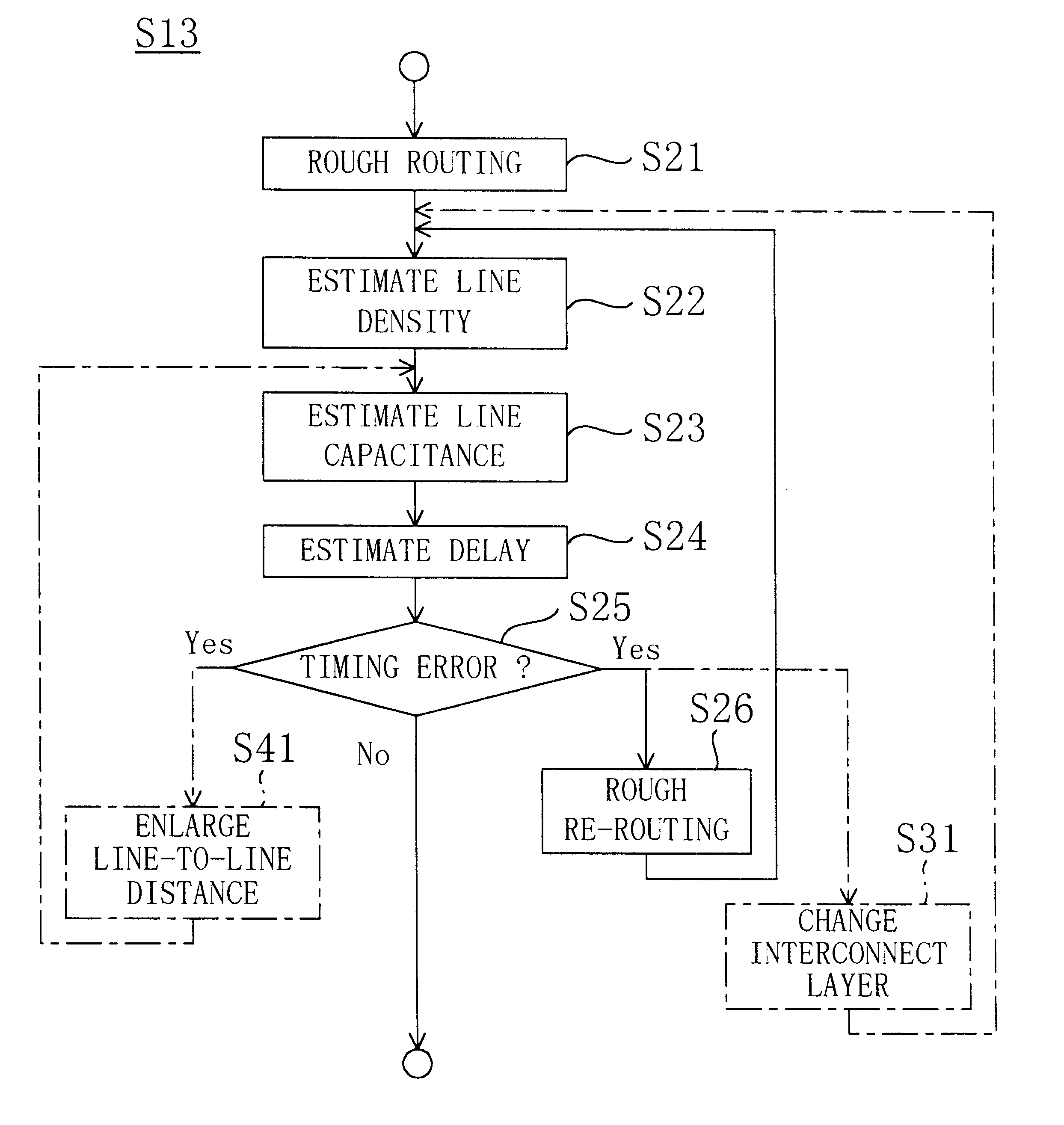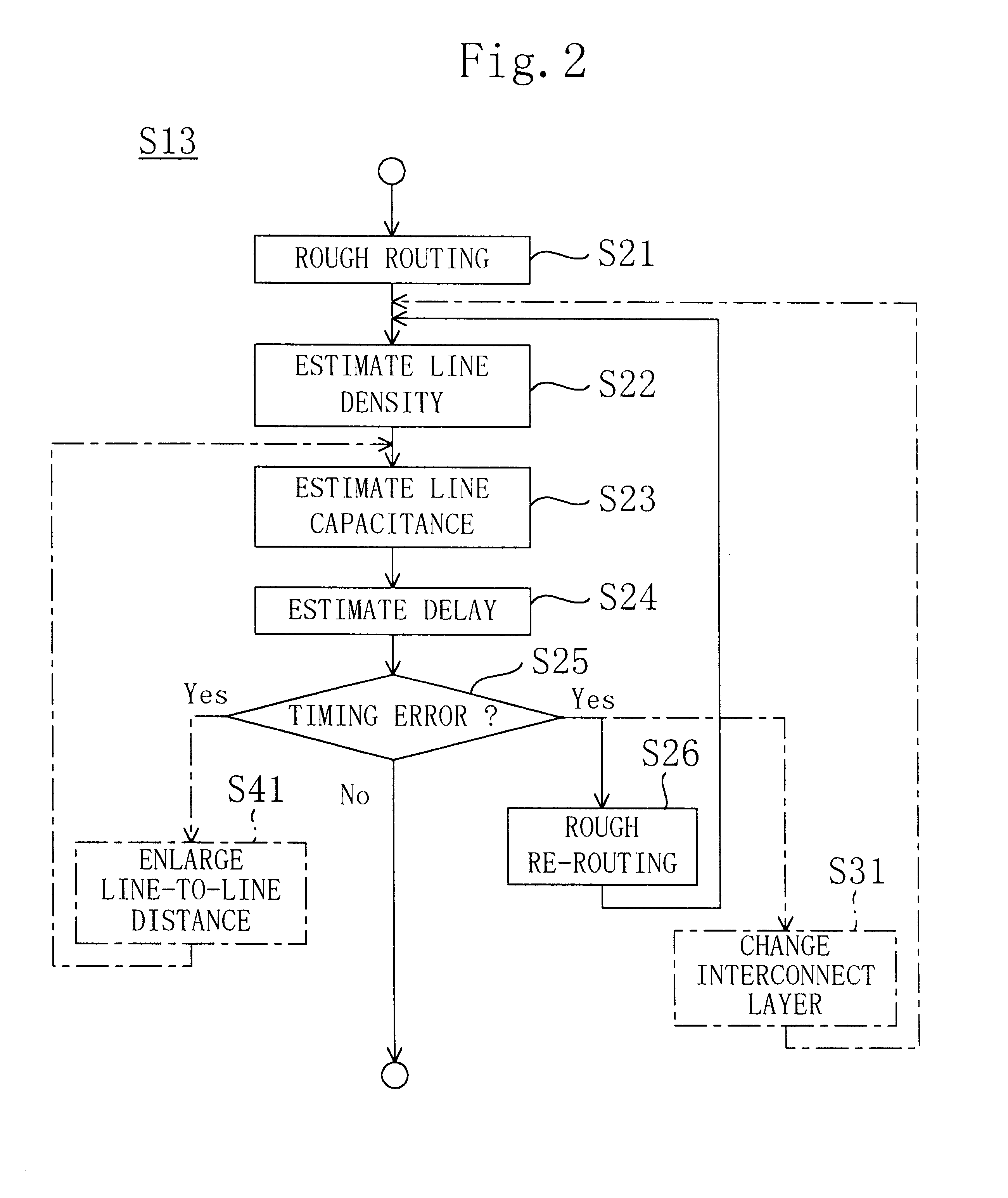Line path determining method and delay estimating method
a delay estimation and path determining technology, applied in the direction of cad circuit design, program control, instruments, etc., can solve the problem that the proportion of delay dependent on the line capacitance is relatively increased in the delay of the entire integrated circuit, and cannot be always decreased in output load capacitance of a cell, so as to achieve the effect of removing timing errors by modifying routing
- Summary
- Abstract
- Description
- Claims
- Application Information
AI Technical Summary
Benefits of technology
Problems solved by technology
Method used
Image
Examples
Embodiment Construction
An embodiment of the invention will now be described with reference to the accompanying drawings.
FIG. 1 is a flowchart for showing procedures in layout design for an integrated circuit. In FIG. 1, S11 indicates a netlist making step of making a netlist describing connection between respective cells in a target integrated circuit; S12 indicates a cell placing step of placing each cell described in the netlist made in the netlist making step S11; S13 indicates a line path determining step of determining line paths between the cells placed in the cell placing step S12; S14 indicates a detailed routing step of generating a routing pattern through detailed routing; S15 indicates a line capacitance calculating step of calculating a capacitance between lines on the basis of the routing pattern generated in the detailed routing step S14; and S16 indicates a delay time calculating step of calculating a delay time of the integrated circuit. Also, S17 indicates a step of verifying whether or n...
PUM
 Login to View More
Login to View More Abstract
Description
Claims
Application Information
 Login to View More
Login to View More - R&D
- Intellectual Property
- Life Sciences
- Materials
- Tech Scout
- Unparalleled Data Quality
- Higher Quality Content
- 60% Fewer Hallucinations
Browse by: Latest US Patents, China's latest patents, Technical Efficacy Thesaurus, Application Domain, Technology Topic, Popular Technical Reports.
© 2025 PatSnap. All rights reserved.Legal|Privacy policy|Modern Slavery Act Transparency Statement|Sitemap|About US| Contact US: help@patsnap.com



